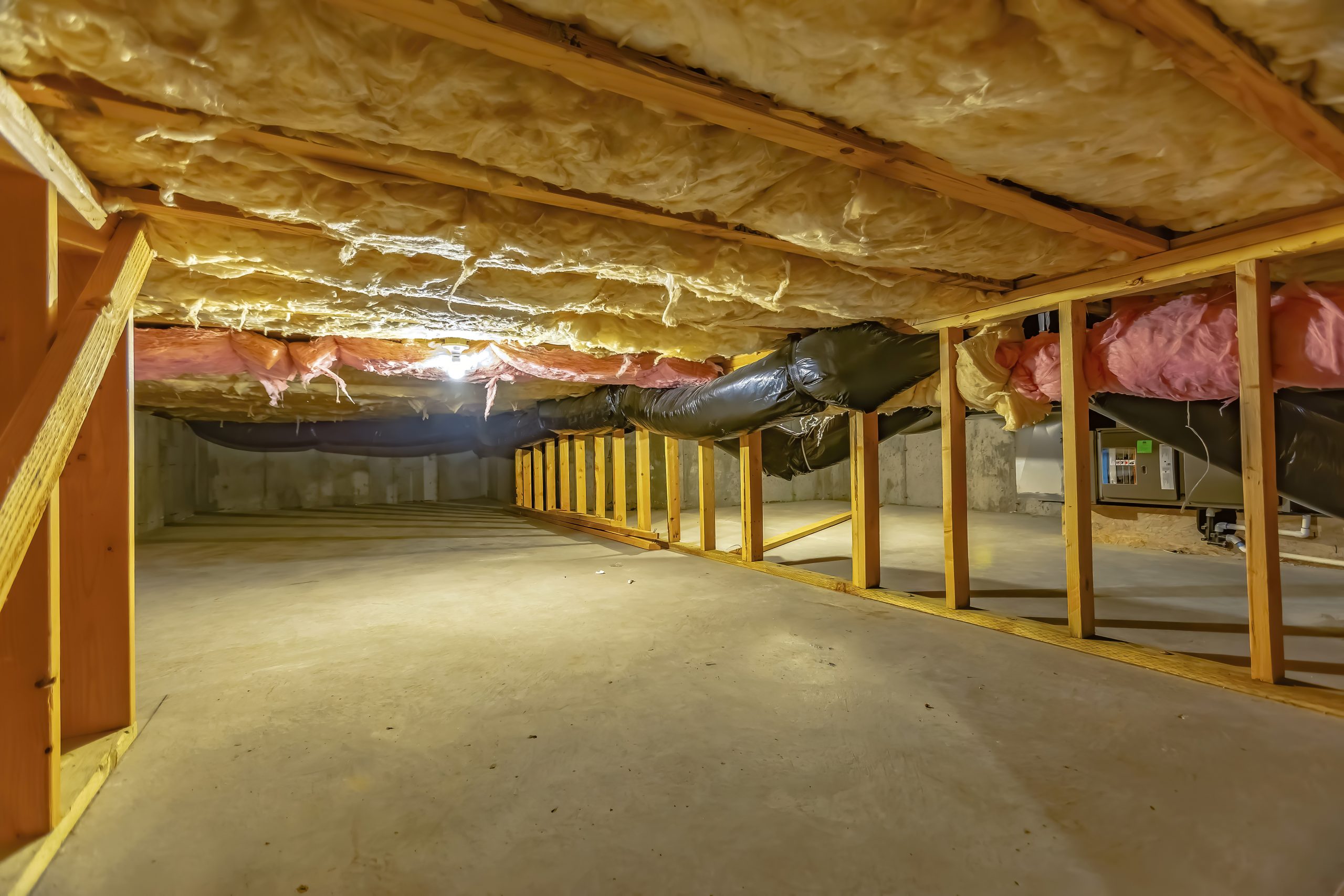When you have a basement or crawl space in your home, it’s likely to endure a certain degree of water damage at some point. Although the problem might be minor at first, it can worsen over time and escalate into more serious issues.
Generally, the basement or crawl space houses the heating, ventilation, and air conditioning (HVAC) systems. It’s also where you’ll find the ductwork, insulation, plumbing, and electrical wiring. Since several crucial elements are present, make it a priority to keep it dry and free of moisture.
Making sure the crawl space in your home is dry should be one of your priorities. Sadly, this isn’t always the case, and most crawl spaces can end up with pests, mold growth, and decay. If you suspect a problem in the crawl space of your home, you might want to check out https://www.baycrawlspace.com to learn more about the common issues you’re likely to encounter and how to deal with them.
If you’re wondering how to keep the crawl space in your home in good shape for years to come, here are several effective ways to keep the crawl space dry.

1. Maintain The Right Level Of Humidity
One way to prevent the crawl space in your home from getting moisture is to maintain the ideal humidity level. When the area has the right level, it can prevent the growth of mold or mildew, wood rot, and insulation damage, which are likely to occur if the humidity level is too high.
Consider using a digital thermo-hygrometer to measure the humidity level. Once the level is closing to 65% and continues to rise, you need to act immediately.
The best way to lower the humidity level is to use a dehumidifier in your crawl space. The device works by eliminating excess moisture from the air.
2. Inspect The Crawl Space
A simple task you can do right away is to inspect your crawl space. Perform a thorough inspection by pinpointing any holes and cracks. There should be no openings or escape routes for small animals, crawling insects, or pests. Most pests can be destructive by damaging the wood, insulation, or even the electrical wiring.
It would be best to seal any holes and cracks you’ll find using caulking, foam insulation, and wood. Avoid leaving even a tiny gap since it’ll allow the entry of pests.
Don’t forget to check for any leaks that can send drips of water into your crawl space. Carefully inspect the plumbing components and HVAC ducts. Consider insulating your plumbing system to prevent condensation if you reside in a cold region.
3. Install A Vapor Barrier
If you want your crawl space to stay dry, preventive measures will greatly help. The majority of crawl spaces typically have exposed dirt floors that allow ground moisture to seep into your home, allowing an increase in the humidity level.
An effective way to prevent moisture from building up in your crawl space is to use a vapor barrier, usually made of polyurethane sheeting.
Take accurate measurements of your crawl space and cut the sheet accordingly. The sheet should spread tight on the floor and over the walls. Secure in place using tape. If you find the task challenging, consider hiring a local contractor.
When you have a vapor barrier in place correctly, it can help minimize the level of moisture significantly and keep it dry for years to come.
4. Insulate The Crawl Space
Once you have properly installed a vapor barrier in your crawl space, consider adding insulation as well. It would be best to insulate the crawl space with rigid panels of expanded polystyrene foam. It helps create a tight seal that prevents air entry while protecting against moisture and mold.
The insulation of the space will also improve the overall energy efficiency of your home while promoting better air circulation.
5. Install The Appropriate Vents With Covers
The installation of vents is crucial in ensuring the right ventilation in your crawl space, but make sure to install the right ones. Incorrect vents or poor installation can bring about issues such as the entry of air, water, and various pests.
If you’re going to install the vents yourself, carefully follow the instructions. Consider hiring a professional if you lack the necessary skills or time.
Don’t forget to ensure all the vents are covered with airtight covers to prevent unwanted elements from entering your crawl space.
6. Install A Sump Pump
A sump pump is essential in the prevention of flooding. It’s installed at the lowest part of the crawl space. Remember that you can never predict the weather and know when flooding will occur.
In case flooding occurs, especially after a heavy downpour or a burst pipe in your home, the sump pump is responsible for eliminating the water before it builds up and causes severe damage.
7. Proper Positioning Of The Downspouts And Gutters
All the gutters and downspouts should be facing away from your home. If not, the water will flow back, especially during heavy rains.
Consider repositioning the downspouts to prevent backflow toward the foundation of your home. As an additional measure, always keep the gutters clean and free of debris.
Final Thoughts
The crawl space is one of the crucial areas in your home since it houses several important elements such as the HVAC system, plumbing, and electrical wiring. Having a moist crawl space will likely result in various problems, with structural damage being the worst. With the help of these measures, such as insulation, ventilation, and vapor barriers, you can keep your crawl space dry and moisture-free for many years.